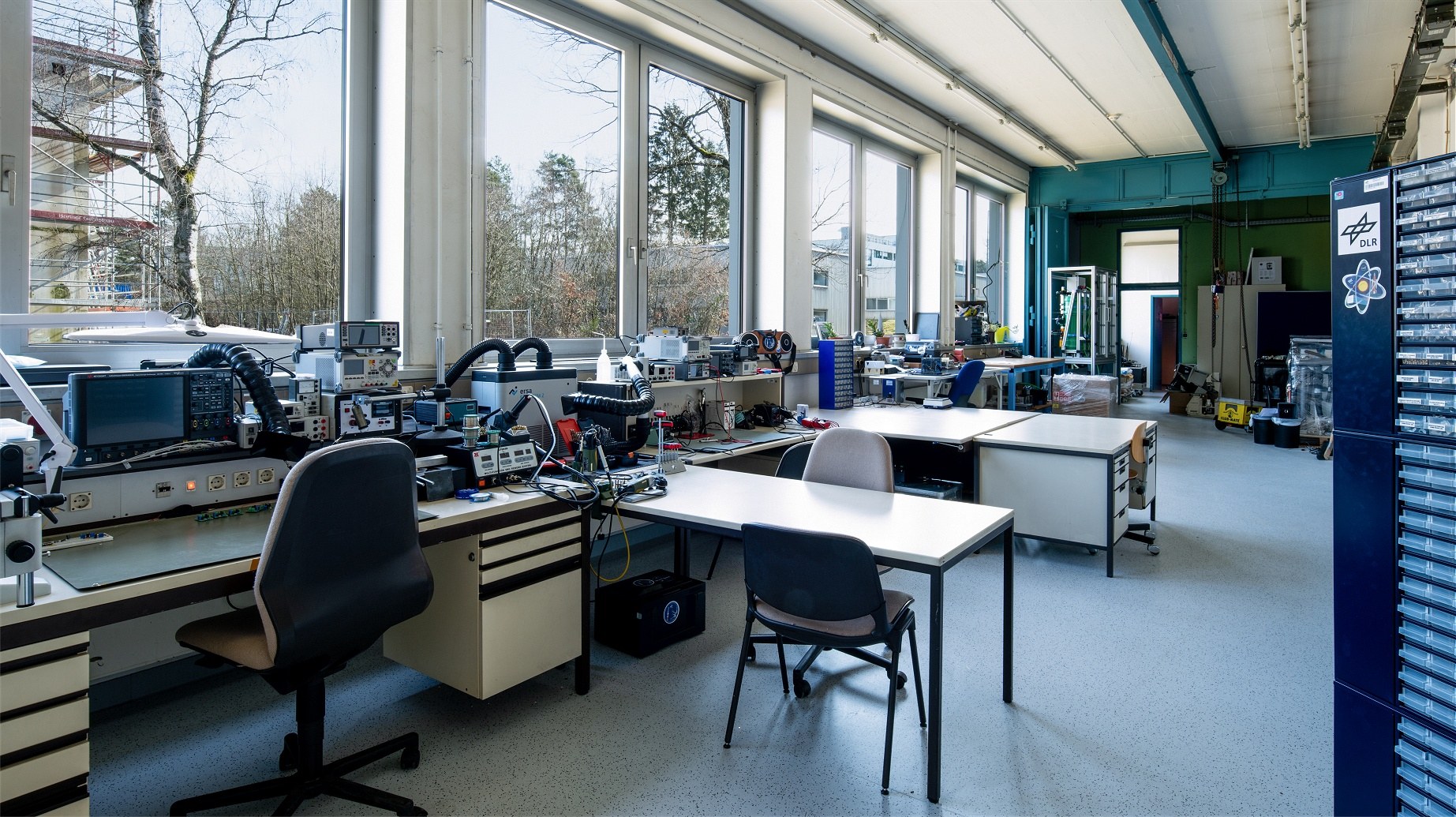Aeromedical FabLab

At the Institute of Aerospace Medicine, the Aeromedical FabLab combines life sciences and technology. We develop experiments and equipment to answer scientific questions from the various departments of the institute and carry them out under modified gravity conditions, e.g. on centrifuges, in the drop tower, during parabolic flights and on sounding rockets. Based on years of experience and numerous successful missions, we quickly deliver experimental equipment and setups using innovative technologies such as 3D printing and commercially available products.
Technologies for the investigation of model systems such as cells and organoids under real and simulated space conditions are an important focus of our work. This often centres on the development of the smallest life support systems in order to be able to study living systems in space. In close co-operation with the Institute's departments, universities and industrial partners, we also develop sensor technologies for research and development in the field of human sciences. We are also driving the development of closed-loop biological life support systems needed for long-term astronautical space missions. Our innovation, the DLR-C.R.O.P.® filter technology, optimises waste recycling for food production and benefits both space missions and sustainable agriculture on Earth.
Our work supports long-term space missions, promotes health research and contributes to sustainable economic development on Earth.
Microgravity and hypergravity – from cells to humans
In collaboration with the Department of Applied Aerospace Biology, we develop micro- and hypergravity applications for cells and higher organised models such as organoids. We use internally developed and validated ground-based simulation facilities that simulate microgravity conditions as they occur in microgravity for cells, organoids, small plants and animals. We validate and compare these technologies using bioassays and experiments on real microgravity platforms such as the DLR MAPHEUS® sounding rocket programme. Hypergravity studies and advanced microscopy complement our research and create a unique portfolio that is available to external co-operation partners and industry.
Gravitational changes
A research highlight, implemented in collaboration with the Department of Applied Aerospace Biology, is the identification of gravity-induced changes in the physiology, signalling pathways and gene expression patterns of cellular systems such as nerve cells or fundamental effects on membrane fluidity. We aim to understand how gravity, as the only constant stimulus during evolution, interacts with mechanosensitive ion channels and the cell membrane. We aim to uncover fundamental mechanisms of gravity and mechanosensing that influence cell migration, proliferation, regeneration and ageing. A future challenge will be to translate our findings from space research into medical applications on Earth.
Bioregeneration
With the C.R.O.P.® filter, we have developed an efficient biofilter system that produces fertiliser from nitrogen-rich liquid organic waste such as urine or liquid manure. On this basis, we would like to design a prototype suitable for use in space that also reliably removes pharmaceutical residues and pathogens. We also want to develop additional bio-based technologies for recycling other materials in order to close the resource cycle in space and enable a bioeconomy on Earth. To achieve these goals, the C.R.O.P.® filter will be integrated into the EDEN LUNA greenhouse, which is part of the LUNA Analogue Facility in Cologne.
Our knowledge will contribute to the development of a closed infrastructure that supports a healthy life in space and on Earth.
Related links
